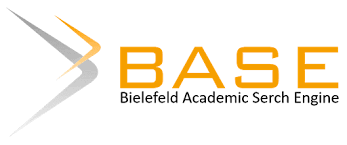PENGEMBANGAN BAHAN AJAR DIGITAL MATEMATIKA SMA KELAS X BERBASIS STEM
Keywords:
Digital teaching materials, STEM, learning outcomesAbstract
STEM is an appropriate learning with the demands of the 21st century. This study aims to determine the steps for the development and quality of digital mathematics teaching materials for class X SMA based STEM on trigonometry material. The procedure uses the research and development adaptation Plomp development model that includes four stages, namely a preliminary investigation, design, realization/construction, and testing, evaluation and revision. Sources of data in this study are validators, mathematics teachers and students of SMA Negeri 7 Denpasar. The data collection technique used a validation questionnaire for validation tests, practicality questionnaires for practicality tests and tests for testing the effectiveness of teaching materials. The results of the initial validity test were declared "valid", with the value of validity in the content aspect of 0.72, validity of the presentation aspect of 0.90, language validity 0.92, and media validity 0.93. The results of the second stage the validity test were declared "valid", with a validity value 0.91. The test results on the practicality obtained was 75.8 students and teachers 75.3 categorized as "practical", the results obtained in the evaluation of students had an average of 82.63, it can be interpreted that mathematics teaching materials based STEM “effective” for use in learning
Downloads
References
Agung, L., & Akhyar, M. (2019). Perkembangan bahan ajar digital sejarah lokal berbasis toponimi di Vorstelanden Surkarta. Seminar Nasional Sejarah Ke 4, 618–628.
Aminingsih, & Izzati, N. (2020). Pengembangan modul pembelajaran berbasis STEM pada materi himpunan kelas VII SMP. Jurnal Ilmiah Pendidikan Matematika, 2(1), 67–76.
Kusumawati, N. M. (2017). Optimalisasi model pembelajaran berbasis masalah dengan berbantuan lembar kerja siswa ( LKS ) untuk meningkatkan aktivitas dan hasil belajar. Journal of Education Action Research, 1, 197–209.
Popalri, & Fikri, A. (2019). Validitas modul bola tangan bagi mahasiswa pendidikan jasmani kesehatan dan rekreasi STKIP PGRI Lubuklinggau. Gelanggang Olahraga: Jurnal Pendidikan Jasmani Dan Olahraga, 3(1), 89–95.
Rahdiyanta. (2016). Teknik penyusunan modul. Universitas Negeri Yogyakarta.
Rahmatina, C. A., Jannah, M., & Annisa, F. (2020). Pengembangan Bahan Ajar Berbasis Stem (Science, Technology, Engineering, and Mathematics) Di Sma/Ma. Jurnal Phi; Jurnal Pendidikan Fisika Dan Fisika Terapan, 1(1), 20. https://doi.org/10.22373/p-jpft.v1i1.6531
Saraswati, P. M. S., & Agustika, G. N. S. (2020). Kemampuan berpikir tingkat tinggi dalam menyelesaikan soal HOTS mata pelajaran matematika. Jurnal Ilmiah Sekolah Dasar, 4(2), 257–269.
Sari, N., Syarif Sumantri, M., & G Bachtiar, I. (2018). The development of science teaching materials based on STEM to increase science literacy ability of elementary school students. International Journal of Advances in Scientific Research and Engineering, 4(7), 161–168. https://doi.org/10.31695/ijasre.2018.32808
Sri Mertasari, N. M. (2020). Pengujian Instrumen Penelitian Kuantitatif dengan Pendekatan Klasi. Undiksha Press.
Sugiyanti, L., Arif, A., & Mursalin. (2018). Pembelajaran abad 21 di SD. Prosiding Seminar Dan Diskusi Nasional Pendidikan Dasar UNJ, 439–444.
Downloads
Published
How to Cite
Issue
Section
License
Copyright (c) 2021 LPPM Universitas PGRI Mahadewa Indonesia

This work is licensed under a Creative Commons Attribution-NonCommercial-ShareAlike 4.0 International License.
Hak cipta mencakup hak eksklusif untuk mereproduksi dan mengirimkan artikel ini dalam semua bentuk dan media, termasuk mencetak ulang, memotret, mikrofilm dan reproduksi serupa lainnya, serta terjemahannya. Reproduksi dari bagian manapun dari jurnal ini, penyimpanannya di database dan transmisinya dengan bentuk atau media apa pun, seperti salinan elektronik, elektrostatik dan mekanis, fotokopi, rekaman, media magnetik, dan lain-lain, akan diizinkan hanya dengan izin tertulis dari penerbit jurnal.







1_(1).jpg)











